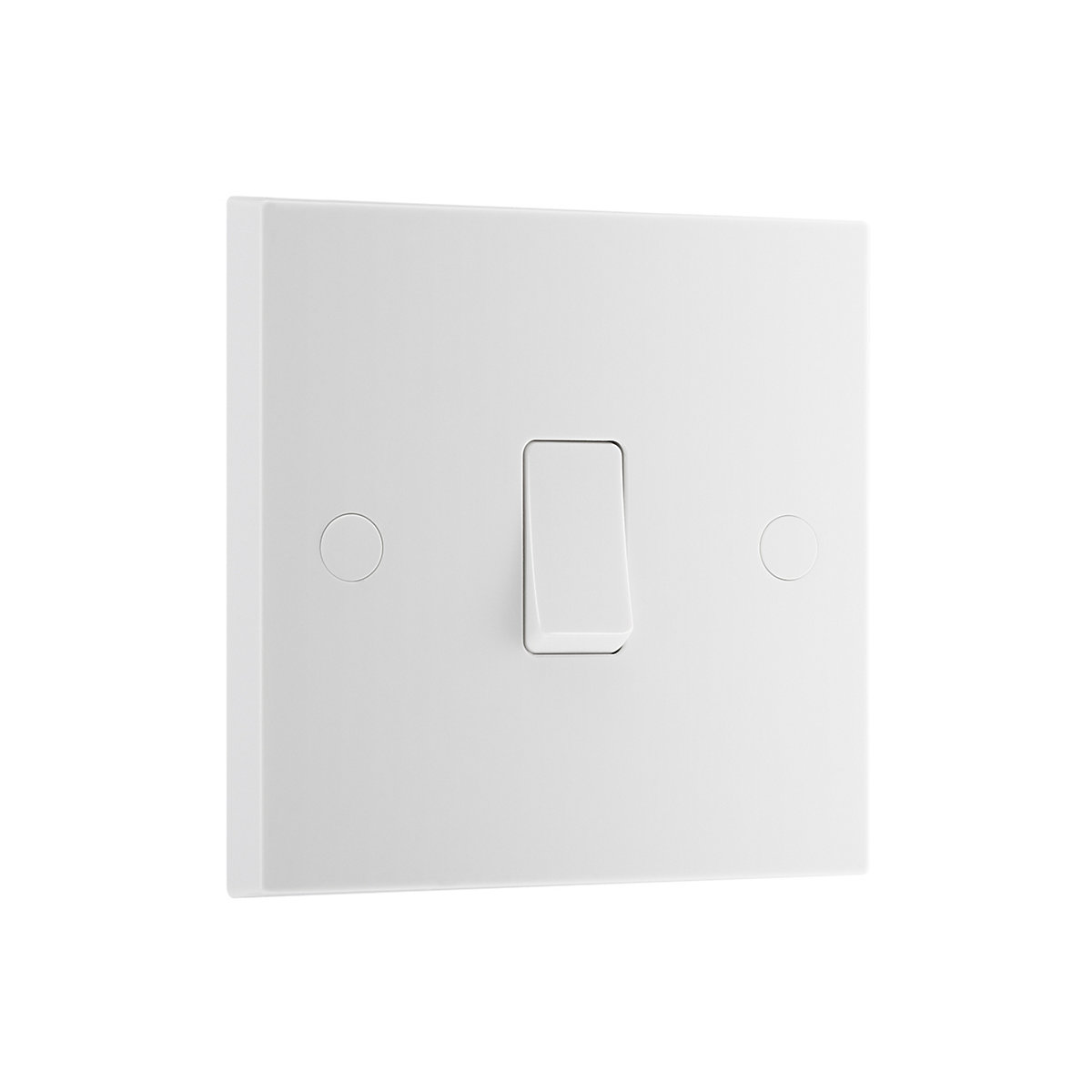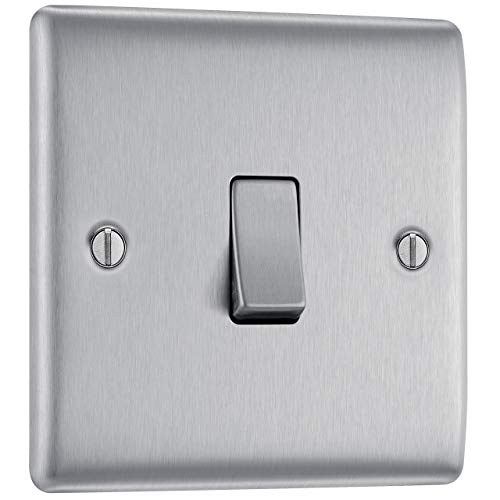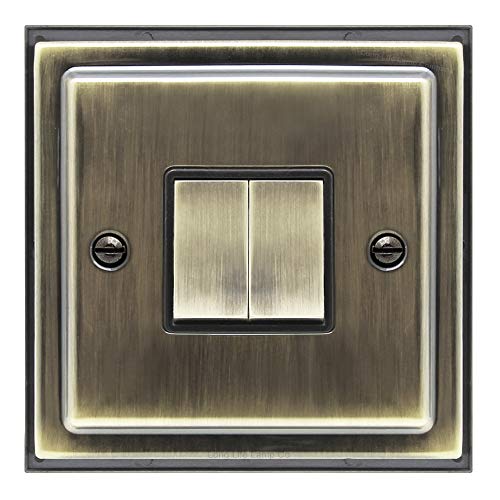Get expert advice on how to change a light switch cover to add a new look to any room
Fed up with your boring old light switch cover? Discover how to swap out the old and introduce a smart new one

Changing a light switch cover is a quick, easy and smart way to freshen up the look of a room. It can be a cost-effective mini-makeover or part of a grander refresh to your home. Choose a design and colour that matches your current decor, or select a new style to elevate a new look space.
There’s plenty to choose from. The best light switches can come in chrome, brushed metal, brushed brass, or even smart, smooth glass-like finishes that embrace a cool contemporary aesthetic. Whatever you choose, you need a couple of specialist tools to stay safe and the expert advice you’ll find in this guide to make it happen.

Eric Davis has worked as a self-employed electrician for over 15 years. Having worked on both domestic and commercial projects. Eric also provides expert advice on electricals on behalf of MyJobQuote.co.uk, and his expertise has been featured in a range of reputable publications, both online and in print.
Can I change a light switch cover myself?
Most electrical jobs should be performed by a qualified person, but some can be performed on a DIY basis. Eric Davis, a self-employed electrician who works for MyJobQuote, shares that a light switch cover can be done DIY, “Much of the time, changing a light switch cover is a simple job, so you can do it without an electrician.”
But, Davis warns, “However, to keep yourself safe, it’s best to invest in an insulated screwdriver and voltage tester pen.” He adds, “You will also need to be able to turn off your lighting circuit safely. So, it’s only worth attempting if your electrics and consumer unit are up to date.”
If you live in an older home and the electrics haven’t been updated, you should ask yourself, Does my house need rewiring? Davis says, “It’s also worth hiring an electrician if your home’s wiring is quite old. They will be able to check that the lighting circuit is safe and in good condition first.”
He adds, “One way to tell whether your wiring is old is to turn the lighting circuit (or your electricity) off and unscrew the cover of your light switch.” The colours of the wires are a quick indicator of the age of any wiring. “If your wiring is relatively new, you’ll see a brown live wire and a blue neutral wire. Should you see a red live wire and a black neutral wire, your wiring is much older.”
If you want to change a plastic cover for a metal one, the cover will need an extra wire connection installed to earth it. This is to safeguard against electric shocks.
Bring your dream home to life with expert advice, how to guides and design inspiration. Sign up for our newsletter and get two free tickets to a Homebuilding & Renovating Show near you.
The tools you’ll need to change a light switch cover
You only need a couple of tools to change a light switch cover. Eric Davis, Electrical expert for MyJobQuote, recommends the following: “You’ll need an insulated, flathead screwdriver. This type of screwdriver is known as a VDE screwdriver and is identifiable by its red and yellow handle and the red cover on the blade.” Like this Draper XP1000 VDE Plain Slot Interchangeable Screwdriver from Amazon.
He adds, “The other essential bit of kit is a voltage tester. Voltage tester pens (like this Labgear Voltage Detector Electrical Tester Pen from Amazon) cost around £10 and have an LED light and a beeping noise to indicate whether a wire is live or not.”
Try these light switch covers
Steps to change a light switch cover
Here electrician Eric Davis runs through the steps needed to change a light switch cover
1. Switch off electricity
First, switch off the electricity to your lighting circuit by flicking the relevant switch in your consumer unit. Next, undo the two screws on the light switch cover (face plate) with your insulated screwdriver and gently pull it forward slightly and let it hang down.
Now, take your voltage tester pen and hold it against the wires to check that the electricity is definitely off.
2. Take a photo
Take a photo of the wiring behind your switch cover, so you have something to refer to when you wire up the new cover. If it’s a single, one-way switch, you’ll have two or three wires connecting the cover to the box behind the switch. You should have a brown live wire and a blue neutral wire, and possibly a green and yellow earth wire.
3. Remove old cover
To remove the old switch cover, you need to undo the connecting wires. On the back of the cover, you’ll see a connector block holding the wires. To remove the wires, undo the screws on the sides of the block. You can now remove the old cover.
Davis adds a word of warning. A plastic cover may only have a live wire and a neutral wire, whereas a metal cover will have an additional wire to earth it. If you’re changing a plastic cover to a metal one and don’t have three connecting wires, stop and call an electrician.
4. Connect new cover
Make sure you slot the wires into the correct holes on the back. This is where your photo can come in handy; however, the connector block should be labelled to help you. The hole for the live (brown) wire should be labelled ‘Com’ and the hole for the neutral (blue) wire should be labelled ‘L1’.
If the cover needs an earth wire, there should be a hole labelled with an earth symbol. This consists of three horizontal lines with a vertical line above. Carefully poke the copper end of each wire into the correct hole, so only the insulation is showing, and tighten the screws to secure them. It’s best to do one wire at a time.
5. Replace cover
Now the cover is wired up and ready to be screwed in place on the wall. Line the cover up with the switch box. Take your two fixing screws and tighten them to fix your new switch cover in place. Finally, turn the lighting circuit back on at the consumer unit and check it works.
6. Alternative options
If adding a decorative light switch face plate over a light switch cover, first remove the screws from the cover. Place the decorative light switch face plate over the switch, line up the screw holes, add screws through both and screw it into place. If adding a blanking plate, simply screw it into place instead of replacing the cover.
Make sure that the screw holes match up with the back box screw holes. If they don't, you won't be able to use the face plate or the blanking plate.
How much does an electrician charge to change a light switch cover?
If you’re not confident in changing a light switch cover yourself, then calling in an electrician makes sense. The job shouldn’t take long, and it won’t cost too much, explains Davis, “Changing a light switch cover shouldn’t take longer than 30 minutes to do, so you can expect an electrician to charge between £20 and £50 for their time.”
An electrician may have a minimum call-out charge, so check when getting quotes.
The costs for light switch covers can vary greatly, continues Davis, “Prices for light switch covers start at around £1.50, but you can pay around £50 for designer ones.”
To save money, Davis suggests, “If you’re planning to upgrade all the light switch covers around your home, it’s usually more cost-effective to buy a pack of covers and get them all fitted at the same time.”
FAQs
Are light switches a standard size?
In the UK, there is a common standard for light switch covers, shares Davis, “Most covers for single and double switches measure 86mm by 86mm, but not all.” Some light switch covers, typically decorative and designer, are slightly larger to enhance the design.
Davis says, “It’s worth checking the measurements of your existing switch cover and the one you want to buy.” A larger cover shouldn’t be an issue, but if you want an exact size replacement, it makes sense to measure up first.
Perhaps more important is that a replacement light switch cover fits the back box. If not, you will need to replace the back box as well. Davis reinforces the point, “Also, check that the new cover is compatible with your switch’s box size. If you’re in any doubt, consult an electrician.”
What is the difference between budget and more expensive light switch covers?
Light switch covers should all meet a minimum standard, but typically, the more you pay for a cover, the better the quality. Davis points out that the basics should be the same: “In terms of how they’re wired and how they operate, there shouldn’t be any major difference between budget and expensive light switches.”
If you are paying extra, Davis says, “There is probably a difference in the quality of the actual switch mechanism and the cover.”
However, he adds, “Cheap brass-effect covers may have coatings that aren’t as durable or scratch-resistant or the plastic switch insert may not match the colour of the cover.” These are typical signs of a cheaper cover. Higher quality covers will be made from higher quality materials, offer more or better features and will last longer.
Light switches take control of the lighting in your home, and how your lighting works can have a big effect on how a room looks. Check out the latest lighting trends, as well as how to implement lighting design and how to light a kitchen to get the best for your home.
Steve Jenkins is a freelance content creator with over two decades of experience working in digital and print and was previously the DIY content editor for Homebuilding & Renovating.
He is a keen DIYer with over 20 years of experience in transforming and renovating the many homes he has lived in. He specialises in painting and decorating, but has a wide range of skills gleaned from working in the building trade for around 10 years and spending time at night school learning how to plaster and plumb.
He has fitted kitchens, tiled bathrooms and kitchens, laid many floors, built partition walls, plastered walls, plumbed in bathrooms, worked on loft conversions and much more. And when he's not sure how to tackle a DIY project he has a wide network of friends – including plumbers, gas engineers, tilers, carpenters, painters and decorators, electricians and builders – in the trade to call upon.




